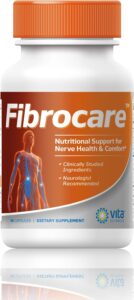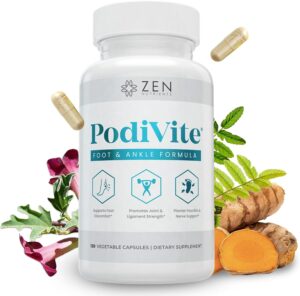In recent years, a wave of innovative websites has emerged to cater specifically to individuals grappling with pain, particularly that stemming from conditions like *plantar fibromatosis*. These platforms offer a treasure trove of resources—from herbal solutions that incorporate *adaptogens* to comprehensive guides on pain management techniques that can empower users to take control of their wellness journeys.
Many of these sites showcase the clinical benefits of adaptogens, which have been identified for their remarkable ability to potentially alleviate various types of pain. For example, websites may include testimonials, research articles, and expert interviews that detail how these natural substances can help balance the body’s response to stress, which is vital for those dealing with chronic pain. The idea is not just to mask the pain but to address underlying factors. As an essential part of herbal medicine, adaptogens are being re-evaluated in contemporary settings, enabling sufferers to access age-old wisdom aligned with modern science.
“Adaptogens are the bridge between ancient practices and modern pain management strategies.”
Curious about how these adaptogens work? They modulate the body’s response to environmental stressors, which can help regulate inflammatory processes and enhance overall resilience. This can be especially beneficial for individuals experiencing pain related to plantar fibromatosis, as stress can exacerbate symptoms. New websites often provide interactive features, such as user forums, where individuals can share their experiences, fostering a sense of community and reducing feelings of isolation associated with chronic pain.
| Adaptogen | Potential Benefit |
|---|---|
| Ashwagandha | May reduce stress and inflammation |
| Rhodiola | Known for boosting energy and reducing fatigue |
| Holy Basil | May help manage anxiety and enhance overall well-being |
Moreover, the integration of adaptogens into personalized pain management strategies is more accessible than ever, thanks to these emerging online resources. Users can discover tailored supplement suggestions or dietary plans, helping to create a holistic approach to managing their condition. The excitement surrounding these new platforms lies not only in their informative content but also in their potential to fundamentally change how individuals perceive and tackle their pain.
Mechanisms of Action: How Adaptogens Impact Pain Pathways
Access to these online platforms has opened up new avenues for understanding the intricate mechanisms at play when it comes to *adaptogens* and their effect on pain pathways. By exploring how these natural remedies interact with the body, individuals can gain insights that could revolutionize their approach to *pain management*. Through user testimonials and research articles, visitors often learn about the physiological processes involved—particularly how adaptogens can influence inflammation and stress responses, which are crucial for those suffering from conditions like plantar fibromatosis.
Take, for instance, *ashwagandha*. This powerful adaptogen not only supports the body’s ability to cope with stress but also shows promise in reducing inflammatory markers. Websites dedicated to educating readers about pain relief highlight studies demonstrating that regular intake of ashwagandha can lower levels of cortisol, a primary stress hormone, potentially leading to reduced pain perception. Similarly, *rhodiola* has gained attention for its ability to improve energy levels while simultaneously combating fatigue—an aspect often overlooked in chronic pain management. By featuring such adaptogens, these platforms provide a comprehensive view of their therapeutic potential.
Engaging with these websites can also lead to lively discussions about the benefits of incorporating herbal solutions into daily life. Many users share their results with various combination therapies—such as pairing adaptogens with anti-inflammatory foods or gentle exercise routines—which could shape a broader understanding of health management strategies. The information circulated in community forums can be a pivotal stepping stone for those wanting to tailor a unique regimen that meets their specific needs. It’s no surprise that more and more individuals are becoming passionate advocates for such herbal solutions as they witness their transformative effects firsthand.
On these platforms, you might also find detailed articles that break down the biochemical routes through which adaptogens operate. For example, discussions often highlight how certain substances can inhibit the production of pro-inflammatory cytokines, effectively diminishing pain signals. This scientific backing not only bolsters the credibility of the information but also invites readers to engage deeply with the subject matter, pondering how adaptogens might fit into their pain management strategies.
Equipped with knowledge from these new resources, those struggling with plantar fibromatosis can feel empowered to step into conversations about their health with confidence. They can learn to ask their healthcare providers informed questions regarding the integration of adaptogens with conventional treatments, advocating for a collaborative approach to pain relief. By actively participating in their healing journeys and delving into the wealth of knowledge available, individuals may discover not only relief but also a renewed sense of agency over their health.
Common Adaptogens Used in Pain Management
As you traverse the vast digital landscape, you may stumble upon several intriguing websites specifically designed to assist those encountering the challenges of *plantar fibromatosis* and its often-persistent pain. These resources are not merely repositories of information; they serve as comprehensive guides to a wealth of *herbal solutions*, particularly those that leverage the innovative properties of *adaptogens*. One standout feature of many of these sites is their commitment to providing evidence-based insights into the benefits of adaptogens in pain management.
For example, one website may detail clear pathways for incorporating adaptogens like *Rhodiola* and *Ashwagandha* into your daily routine. Users can easily navigate their way to sections dedicated to product recommendations and recipes that feature these powerful herbs. They often emphasize the importance of combining adaptogens with lifestyle adjustments, such as nutrition and stress-reduction techniques, to create a holistic approach to management. It’s fascinating how the integration of these elements can lead to a significant improvement in quality of life.
In addition to articles and product reviews, many platforms offer interactive tutorials. These engaging videos guide users through the preparation of herbal teas or tinctures, thus demystifying the application of adaptogens in everyday settings. The practicality of such content can break the cycle of despair often associated with chronic pain, allowing individuals to feel empowered to explore their options actively. Imagine the thrill of crafting your adaptogenic blend, expertly tailored to mitigate that nagging discomfort caused by plantar fibromatosis!
One particular site highlights user experiences, showcasing testimonials that resonate with anyone battling chronic pain. These narratives not only provide social proof but also spark inspiration, inviting readers to contemplate their own paths to relief. One testimonial might chronicle how a dedicated regimen of adaptogens significantly enhanced one individual’s mobility and reduced overall pain levels. Such stories can serve as powerful motivators, urging others to consider how integrating herbal solutions into their regimen might alter their own experiences.
Moreover, with the rise of community forums hosted on these websites, users have the opportunity to engage in lively discussions that go beyond surface-level understanding. Here, individuals can share their personal journeys, swap recipes, and compare notes on the most effective dosages. It creates a dynamic environment that encourages exploration and experimentation, which is crucial for tailoring pain management strategies to fit individual needs. After all, what works wonders for one person might require adjustment for another.
The potential for tailoring adaptogenic use through shared experiences and expert guidance allows individuals to take ownership of their pain management. Encounters within these online communities often lead to questions—like which adaptogens might work best alongside conventional treatments, or how different lifestyles can amplify or mitigate their effects. By fostering inquisitive dialogue, these platforms empower users to become advocates for their health, ensuring that their voices are heard in the broader conversation surrounding pain management.
As the interest in *herbal solutions* continues to burgeon, it’s clear that these informative sites are not simply passing trends; they represent a significant shift towards integrative health approaches. By accessing well-researched information and connecting with a supportive community, individuals navigating the complexities of plantar fibromatosis can find not just relief, but a sense of purpose in their healing journeys. What’s next on your path to discovering the benefits of adaptogens? The answers await you online!
Integrating Adaptogens into Pain Management Strategies
As digital platforms continue to blossom, users now have unprecedented access to information and support networks focused on managing the complexities of *pain management*, particularly for conditions like *plantar fibromatosis*. One notable trend among these emerging websites is their ability to guide individuals through the incorporation of *adaptogens* into their daily lives. With engaging content and expert advice, users can explore a myriad of options that not only address their pain but also enhance overall well-being.
These platforms often feature an array of articles, webinars, and forums where individuals can delve into the world of herbal solutions that utilize adaptogens effectively. Some sites offer interactive elements, like quizzes, to help users identify which adaptogens might best suit their specific pain management needs. This personalized approach encourages exploration and experimentation, promoting an understanding of how different herbs can work together in synergy to alleviate discomfort.
In addition to learning about specific adaptogens, these websites frequently provide detailed resources on lifestyle changes that complement the use of herbal remedies. For instance, readers may access guides that outline simple exercises, stress reduction techniques, and dietary suggestions that align well with adaptogenic therapies. This holistic view is crucial because it underscores the interconnectedness of body, mind, and spirit in managing chronic pain effectively.
As you navigate these resources, you might stumble upon innovative videos and tutorials that demonstrate how to prepare various adaptogenic teas, tinctures, or even infused oils. These engaging formats remove any intimidation factor often associated with herbal remedies, allowing users to embrace new routines with enthusiasm. Imagine the joy in brewing your revitalizing Rhodiola tea or crafting a soothing Holy Basil herbal oil to ease foot discomfort! These everyday rituals not only offer potential relief but also foster a sense of agency over one’s health and well-being.
Furthermore, the wealth of user-generated content on these sites amplifies the educational experience. Through testimonials and shared stories, individuals can witness the transformative power of adaptogens in real-life scenarios. One enthusiastic user might share how integrating ashwagandha into their regimen resulted in a notable decrease in pain alongside improved sleep quality. Such anecdotes inspire others to consider how these *herbal solutions* could redefine their own narratives surrounding pain management.
Equipped with cutting-edge research and practical tools, these websites create a space where knowledge meets community support. Users can engage in discussions about their experiences, compare responses to different adaptogens, and even collaborate on developing unique pain management strategies. This sense of solidarity significantly diminishes feelings of isolation, reminding individuals grappling with *plantar fibromatosis* that they are not alone in their struggles.
As the movement towards integrative approaches in healthcare grows, remain curious and proactive in your journey. Delve into these resources, connect with fellow users, and explore the landscape of adaptogens. How might incorporating these herbal remedies into your life enrich your daily experiences? The answers are just a click away, waiting to inspire your next steps toward holistic wellness.








